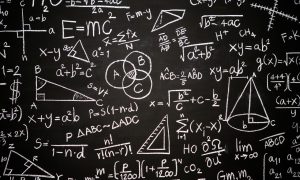Math anxiety hits differently when you’re juggling numbers in a second language. Picture Maria, a bright sixth-grader from Guatemala, staring at a word problem about baseball statistics—a sport she’s never watched, using terms she’s never heard. This scenario plays out in thousands of American classrooms daily.
English Language Learners face a double challenge in mathematics. They must master mathematical concepts while simultaneously processing academic language that often feels foreign. Research from the National Assessment of Educational Progress indicates that English Language Learner (ELL) students consistently score 25-30 points lower than their English-proficient peers on math assessments.
This article examines eight research-backed strategies that enhance math learning for English Language Learners, fostering pathways to success that acknowledge both their linguistic journey and mathematical potential.
Creating a Welcoming Learning Environment
Your classroom culture sets the stage for everything else. ELL students arrive carrying invisible backpacks filled with previous educational experiences, cultural expectations, and sometimes trauma from their migration journey. Creating psychological safety becomes your priority.
Start by acknowledging that mathematical thinking transcends language barriers. Display student work that showcases problem-solving approaches from different cultural perspectives. When Ahmed solves multiplication using the lattice method from his homeland, he celebrates it alongside traditional American algorithms. This validation sends a powerful message: being different doesn’t mean being wrong.
Physical environment matters, too. Post mathematical vocabulary in multiple languages when possible. Create quiet corners where students can process information at their own pace. Consider lighting, seating arrangements, and noise levels that accommodate diverse learning preferences.
Trust builds through consistency. Establish predictable routines that reduce cognitive load. Use the same signal for transitions, maintain consistent homework expectations, and create clear rubrics that students understand regardless of their English proficiency level.
Emphasizing Mathematical Vocabulary for Language Comprehension

Mathematical language operates like a specialized dialect, even for native English speakers. Terms like “quotient,” “product,” and “difference” carry precise meanings that often differ from their everyday usage. For ELL students, this creates layers of confusion that compound quickly.
Begin each unit by front-loading essential vocabulary. But don’t just define terms—build semantic networks that connect new words to concepts students already understand. When teaching “parallel,” draw connections to railroad tracks, ladder rungs, or cultural references from students’ home countries.
Word walls become strategic tools rather than decorative elements. Organize mathematical terms by function, not alphabetically. Group operation words together, measurement terms in another section, and geometry vocabulary in its own space. Include visual representations alongside definitions.
Cognates offer unexpected bridges between languages. “Multiplication” shares roots with Spanish “multiplicación,” French “multiplication,” and Italian “multiplication.” Point out these connections explicitly—they’re lifelines for comprehension that students might not recognize independently.
Practice using academic language in low-pressure situations. Have students explain their thinking using sentence frames like “First, I… Then, I… Finally, I…” These scaffolds support language production while reinforcing mathematical reasoning.
Connecting Math Problems to Familiar Contexts
Story problems become accessibility nightmares when they reference unfamiliar cultural contexts. Baseball statistics, American currency systems, and holiday traditions create unnecessary barriers between students and mathematical concepts.
Rethink your problem selection strategy. Instead of focusing on problems related to Thanksgiving turkey portions, create scenarios involving family celebrations that transcend specific holidays. Replace baseball references with soccer statistics that resonate with students from Latin America, Africa, and Europe.
Survey your students about their interests, hobbies, and cultural backgrounds. Transform this information into mathematical contexts by designing problems around party planning mathematics—calculating costs, proportions, and measurements that are relevant and engaging for several students who mention quinceañera celebrations.
Real-world connections are strengthened when they reflect students’ actual experiences. Problems involving currency conversion, international travel times, or traditional cooking measurements directly relate to the experiences of ELL families. These contexts make mathematics feel practical rather than abstract.
Consider community partnerships that bring authentic mathematical applications into your classroom. Local grocery stores, restaurants, or small businesses often welcome student visits that generate genuine mathematical investigations. These experiences create lasting memories while reinforcing academic content.
Integrating Language Skills Across the Math Curriculum
Mathematics is traditionally viewed as a numbers-only subject, but this approach disadvantages English Language Learner (ELL) students who need integrated language practice. Reading, writing, speaking, and listening skills support mathematical learning when woven throughout instruction.
Math journals have become powerful tools for language development. Students explain problem-solving strategies, reflect on learning challenges, and make connections between mathematical concepts. Initially, accept native language entries or drawings—comprehension matters more than perfect English expression.
Reading authentic mathematical texts builds both content knowledge and language skills. Choose articles about mathematical discoveries, career profiles featuring mathematicians from diverse backgrounds, or news stories involving statistical analysis. These readings expand vocabulary while demonstrating mathematics in real-world contexts.
Speaking opportunities multiply when you prioritize mathematical discourse. Think-pair-share activities, gallery walks, and student presentations provide natural opportunities for language practice—partner ELL students with patient, supportive classmates who model academic language without making corrections feel punitive.
Listening skills develop through mathematical storytelling. Share stories about mathematical concepts, historical discoveries, or problem-solving adventures. These narratives provide context while exposing students to academic language in engaging formats.
Utilizing Visual Models and Manipulatives for Better Understanding
Visual learning becomes crucial when language barriers impede comprehension. Concrete manipulatives and graphic representations make abstract concepts more accessible, reducing the reliance on verbal explanations.
Hands-on materials speak universal languages. Algebra tiles demonstrate polynomial operations without requiring extensive vocabulary knowledge. Fraction strips make equivalent fractions visible and tangible. Geometric solids allow students to explore volume and surface area through direct manipulation.
Digital tools expand visual possibilities exponentially. Interactive graphing calculators enable students to visualize function transformations in real time. Geometry software makes abstract theorems concrete through dynamic demonstrations. These tools often include multiple language options, providing additional support for English Language Learner (ELL) students.
Graphic organizers structure thinking while building language skills. Concept maps connect vocabulary to visual representations. Problem-solving templates guide students through multi-step processes. These scaffolds become especially valuable during independent work when teacher support isn’t immediately available.
Student-created visuals demonstrate understanding while building confidence. When students draw pictures to represent word problems, create their manipulatives, or design posters to explain mathematical concepts, they process information through multiple channels while practicing their communication skills.
Promoting Collaborative Learning for Peer Interaction
Social learning accelerates both mathematical understanding and language acquisition. Carefully structured group work creates opportunities for authentic communication while building mathematical concepts through peer interaction and collaboration.
Strategic grouping makes collaboration successful. Mix language proficiency levels intentionally—pair beginning English Language Learners (ELL) students with more advanced English speakers who can provide modeling and support. Rotate partnerships regularly to prevent dependency relationships while expanding social connections.
Assign specific roles that ensure everyone contributes meaningfully and effectively. The “recorder” documents group thinking, the “presenter” shares results, the “materials manager” organizes resources, and the “questioner” asks clarifying questions. These roles provide structure while creating natural opportunities for language practice.
Establish clear collaboration expectations that respect and accommodate different communication styles. Some students process information silently before speaking, while others think aloud. Create space for both approaches while maintaining focus on mathematical goals.
Peer tutoring benefits both participants when structured appropriately. Students explaining concepts to classmates reinforce their understanding while providing models for academic language use. These interactions often feel less threatening than teacher-student conferences, encouraging risk-taking and genuine questions.
Creating Low-Stakes Conversation Spaces
Traditional classroom discussions can be intimidating for ELL students, who worry about making grammatical mistakes or pronouncing errors. Low-stakes conversation opportunities build confidence while providing essential practice in speaking.
Morning math talks create informal spaces for mathematical thinking. Pose interesting problems or patterns without formal assessment pressure. Students share observations, ask questions, and build on each other’s ideas without worrying about “correct” answers.
Exit tickets become conversation starters rather than assessment tools. Ask students to share one thing they learned, one question they still have, or one connection they made. These brief interactions provide valuable formative assessment data while normalizing mathematical communication.
Math walks around school grounds generate natural conversations about measurement, geometry, and number patterns. Students notice mathematical relationships in architecture, landscaping, and daily routines. These observations fuel discussions that feel authentic rather than contrived.
Choice in communication methods reduces anxiety while maintaining academic focus. Some students prefer writing responses, while others excel at verbal explanations. Many benefit from drawing or demonstrating their thinking and providing options that honor different strengths while building confidence across modalities.
Leveraging Technology for Enhanced Comprehension

Educational technology provides unprecedented support for English Language Learner (ELL) students when used strategically. Translation tools, visual learning platforms, and interactive software can bridge language gaps while maintaining mathematical rigor.
Translation applications provide immediate vocabulary support without interrupting lesson flow. Students can quickly look up unfamiliar terms while remaining engaged with mathematical content. However, emphasize that translation supports learning—it doesn’t replace the need to build academic vocabulary over time.
Video resources with closed captions benefit visual learners while supporting language development. Mathematical concept videos, problem-solving demonstrations, and virtual field trips provide multiple input channels that reinforce learning. Many platforms offer content in various languages, allowing students to build understanding before tackling English versions.
Interactive learning platforms adapt to individual proficiency levels while maintaining grade-appropriate mathematical content. These tools provide immediate feedback, multiple practice opportunities, and visual representations that support comprehension. Progress tracking helps teachers identify areas where additional support is needed.
Virtual manipulatives expand accessibility while building technological literacy. Students can explore mathematical relationships through digital tools that may not be available in physical settings. These platforms often include tutorials and guided practice that support independent learning.
Conclusion
Supporting English Language Learners in mathematics requires intentional strategies that honor both linguistic development and mathematical learning. These eight approaches—creating welcoming environments, emphasizing vocabulary, connecting to familiar contexts, integrating language skills, using visual models, promoting collaboration, fostering conversation, and leveraging technology—work synergistically to break down barriers and build bridges to success.
Remember that language acquisition takes time, but mathematical thinking develops continuously throughout this process. ELL students bring valuable perspectives, problem-solving approaches, and cultural knowledge that enrich classroom learning for everyone. Your role involves creating conditions where these strengths flourish while providing scaffolds for areas of growth.
Implementation doesn’t require perfection from day one. Begin with strategies that feel most manageable, considering your current context and available resources. Build gradually, seek feedback from your ELL students about what supports their learning best, and connect with colleagues who share similar challenges and successes.
The investment pays dividends that extend far beyond mathematical achievement. Students who experience success in mathematics while developing English proficiency build confidence that transfers to other academic areas. They become mathematical thinkers who happen to be multilingual—a tremendous asset in our interconnected world.
ALSO READ: How To Create a Strength-Based Learning Plan
FAQs
A: Research suggests 2-3 years for basic interpersonal communication and 5-7 years for academic language proficiency. However, mathematical concepts can be learned simultaneously with language development using appropriate strategies.
A: Yes, when strategically implemented. Native language supports initial understanding and complex problem-solving. Gradually increase English usage while maintaining comprehension and confidence.
A: Assuming that language barriers indicate mathematical inability. Many English Language Learner (ELL) students possess strong mathematical foundations that become apparent when language supports are provided.
A: Use multiple assessment formats, including visual demonstrations, manipulative use, and portfolio-based evidence. Focus on mathematical thinking rather than language perfection in written responses.
A: Conduct learning surveys, connect with families, research educational systems from students’ home countries, and collaborate with ESL specialists who understand diverse mathematical approaches.


